 Last Epiphany A Feb. 3, 2008 St. Paul’s Exodus 24:12-18 Psalm 99 2 Peter 1:16-21 Matthew 17:1-9
Last Epiphany A Feb. 3, 2008 St. Paul’s Exodus 24:12-18 Psalm 99 2 Peter 1:16-21 Matthew 17:1-9We’ve been going to the beach on sunny days like yesterday. We’ve taken to walking the shore in the afternoon light, pink and blue and yellow, with a calm sea fluttering out before us. Quiet times at the Oceanside are times of rest and reassurance, but the never-ending tide changes the sand with every wave.
We hike in the summer, up mountains – mostly not so high ones – and go swimming and boating and take walks in the woods. There are transcendent moments out in the wild world, in places that are not domesticated, not climbed or hiked or canoed too often. We often call on experiences like that from our memory when we try to imagine what happened to Peter, James and John, who thought they were alone on that mountaintop with Jesus – only to look up and be struck to the ground in terror to see a blast of light, to see three figures and not one, to have no idea what was going on. No, we don’t know, how can we know what to do when God’s bright, holy uncontrollable light shines on us with a mighty blast?
This is one of the very few years when we have the story of Jesus’ baptism, and this story of the Transfiguration, so close together – just a few weeks apart. God actually plays a part in these lessons, and God repeats his line in each: “This is my Son, the Beloved. Listen to him!” Baptism, when Jesus got his watery start in ministry, and Transfiguration, with three quivering disciples under manifestations of the Son of God and two prophets. Annie Dillard, a popular writer of spiritual musings, says that this story raises two questions in the modern mind:
The question from agnosticism is `Who turned on the lights?' The question from faith is `Whatever for?'
You may indeed be sitting there wondering, who turned on the lights? Who is this God anyway, who acts in such a mysterious way? It may take years – a lifetime even – to tussle with that question. But its partner is equally mysterious: Whatever for? Now what? What is next? What are we supposed to do now, God?
Look where Jesus takes the bewildered disciples: they cannot stay in this mysterious, glowing place. Down the mountain – to what? Back to work, boys, Jesus seems to be saying. There is a world out there that needs us. You can’t stay here where things look perfect, where religious experiences are well, conventional, if not predictable. This story appears in three gospels, and in each of them Jesus drags the disciples back to the world the needs healing and hope and hard work. In each of the gospels this story of the glorious religious experience is followed by the story of the healing of a boy so ill he is described as possessed by a demon.
What does it mean, then, to follow Jesus? To be marked as Christ’s own forever? That experience of the Transfiguration can be inspiring, enlightening, hopeful, terrifying – the classic mountaintop experience. But the work of true discipleship is on the ground, here, on the streets, in this place, at home, where people need Jesus to calm the demons and get their lives put back together.
We here at St. Paul’s have both experiences to offer people who are yearning to get their lives put back together. We have a beautiful church – a sacred space – this is the house of God, this is the gate of heaven. This is an oasis in this city – once we get the heat working again!! – that can offer a battered world a bit of respite and peace, a place perhaps, where all kinds of people can glimpse the glory of God we have glimpsed.
But this is also sacred space because it is a different kind of oasis, an oasis where you can get a hot lunch with no questions asked, an oasis maintained by a small, faithful, stalwart crew when all odds seemed against you. That’s discipleship. That is what it means to come down the mountain and get back to the working of healing and binding and feeding and helping. Being a disciple means we follow Jesus, yes, but we follow Jesus by doing what he did: by giving it all away.
The time has come to pull these two pieces of religious experience together: the glory, and the discipleship. When we go back into the main sanctuary – in about a month – we are taking some of this chapel experience with us. We are taking the free-standing altar. We are going to rearrange the first section of pews in the church – yes, unbolt them from the floor and move them around. No, we won’t be sitting this close to each other in there, and maybe we won’t be this in your face with each other, but we will be seated where we can see each other. Where the altar is on the same floor as we are. Where no one will worry about tripping up or down stairs on their way to receive communion.
This is not a fad. This is about discipleship, about invitation, about including strangers – yes even strange strangers – in this sacred community where we encounter God and feed each other. People will be able to walk in the door, and see that same marble altar, that wooden, carved reredos, hear that organ – the same as ever.
But we are here not only to worship that altar space, glorious as it is. We are here to connect the glory of the mountain with the world of service.
The experience on the mountaintop cannot leave us unchanged. When we go back into the church, with the pews rearranged, with the altar in our midst, yes, we will be better equipped to welcome people who come to us. But the real Transfiguration will be here, within us, within each of us, connecting the glory of God with the world God wants us to serve.
Over the next few weeks we will have an opportunity to go visit other churches that have placed the altar in the midst of the people. We will look at historical documents, and see this arrangement in the earliest of Christian churches in Italy and Greece and Jerusalem. We will have pictures and drawings of how we might arrange pews and chairs, places where we might hear the word and share the bread and wine. After Easter, we will add a second service, so we have one which retains traditional Prayer Book liturgy, and one, or more, which reaches out to the many cultures and languages and people who now call Brockton home. We can do this.
It’s Transfiguration Sunday, the last Sunday before Lent, when we engage more deeply with what it means to walk the way of the cross. Like Peter, James and John, we’re running down the mountain, and there is Jesus up ahead, pointing the way, to people in need, to people who need us to show them the way.


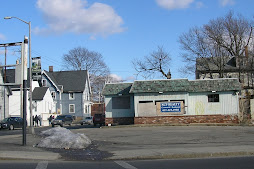.jpg)
.jpg)



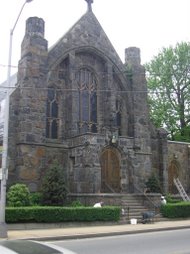
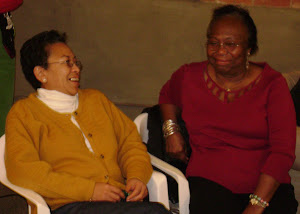
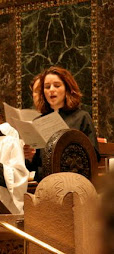
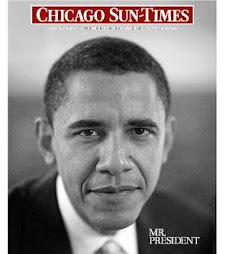
.jpg)

No comments:
Post a Comment